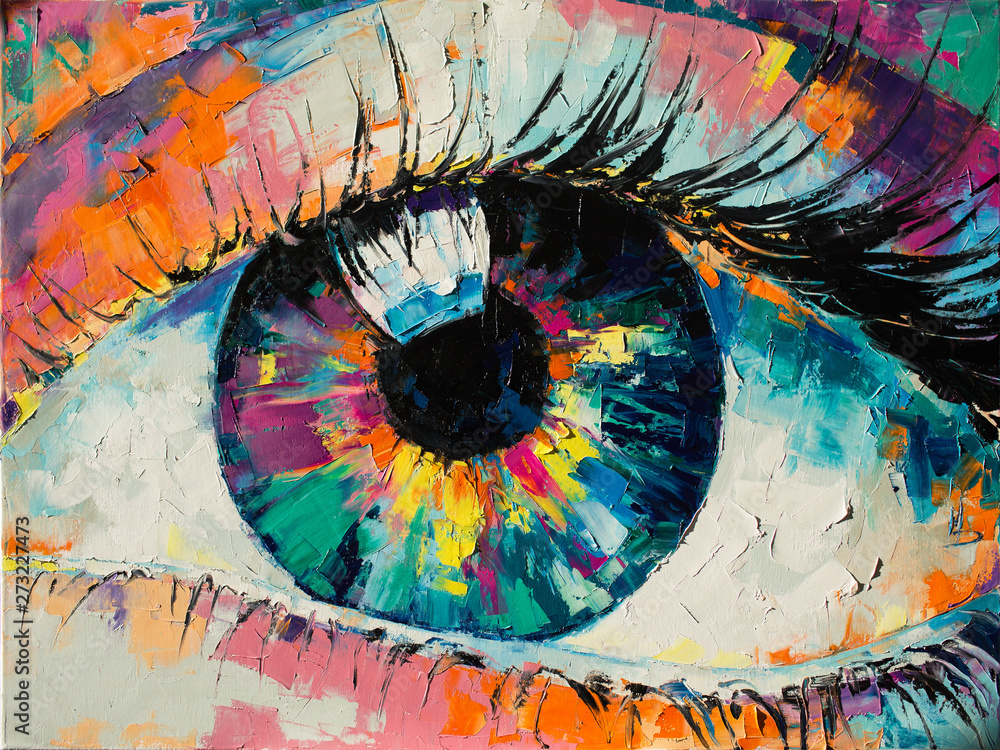Unique Flower and Everyday Scene Oil Paintings for Sale
Unique Flower and Everyday Scene Oil Paintings for Sale
Blog Article
Discovering All About Oil Paintings: An Overview to Recognizing Their Beauty and Worth
Oil paints have actually mesmerized target markets for centuries, using a look into the artistic mastery of various eras. Their abundant background is intertwined with innovative techniques and extensive emotional expression. Comprehending the materials and methods behind these art work can boost admiration. Furthermore, the market for oil paints provides chances for collection agencies and investors alike. As one discovers this fascinating globe, the concern arises: what makes an oil painting absolutely valuable?
The Background of Oil Paint: A Journey Via Time
Oil paint has roots that date back to old times, it truly prospered during the Renaissance, when musicians uncovered its adaptability and abundant color possibility. Early examples can be mapped to the 7th century, with techniques advancing significantly throughout cultures. The tool ended up being popular in Northern Europe in the 15th century, specifically through the jobs of musicians like Jan van Eyck, who originated its usage for comprehensive realistic look and vibrant hues. This period noted a separation from tempera paints, enabling higher deepness and texture. As oil painting spread, it affected countless artists, leading to masterpieces by distinguished numbers such as Leonardo da Vinci and Rembrandt. The tool's legacy continues, forming the art globe well into modern-day times.
Understanding Oil Paints: Materials and Techniques
As musicians discover the globe of oil paints, they encounter a diverse variety of materials and strategies that define this medium. The primary components of oil paint include pigments, which supply shade, and drying out oils, such as linseed, that bind the pigments and promote application. Numerous additives can change the paint's texture and drying out time, boosting convenience. Methods like glazing, where transparent layers are developed, and impasto, which includes applying thick paint, enable for different aesthetic impacts. Furthermore, making use of brushes, scheme blades, and also fingers can produce special appearances and coatings. Recognizing these products and methods enables musicians to totally share their imagination and accomplish the desired impact in their artwork.
The Role of Shade in Oil Paints
Color plays a pivotal duty in oil paintings, influencing both visual charm and psychological vibration. Understanding shade theory essentials, including the partnerships between hues, can boost an artist's ability to communicate mood and ambience. Furthermore, mastering shade mixing strategies enables greater deepness and richness in a painting's scheme.

Color Theory Essential
Understanding shade concept is crucial for musicians functioning with oil paints, as it develops the foundation for creating visually interesting and harmonious make-ups. Color concept includes the study of just how colors interact, the shade wheel, and the relationships in between key, second, and tertiary shades. Artists use complementary shades to improve contrasts and create centerpieces, while comparable colors advertise unity and cohesiveness within a piece. In addition, the concepts of amazing and warm colors affect the understanding of deepness and space in a paint. Realizing these principles permits artists to adjust color effectively, leading the audience's eye and communicating their designated message. Mastery of shade concept eventually improves an artist's capacity to convey feelings and ideas via their job.
Emotional Effect of Color
The emotional effect of color in oil paintings plays a critical function in just how audiences connect and perceive with artwork. Shades stimulate specific feelings and state of minds, affecting the viewer's emotional state. Cozy shades like reds and oranges can develop a sense of heat and energy, while trendy tones such as blues and environment-friendlies often stimulate calmness or introspection. Artists tactically select shade combinations to improve narrative aspects, assisting the target market's emotional journey. The saturation and contrast of colors further amplify these effects, attracting attention and creating focus. Inevitably, the interaction of colors in oil paintings not only boosts their visual charm however also works as an effective tool for emotional expression, enriching the viewer's experience and analysis.
Shade Mixing Techniques
While lots of elements of oil painting add to the total make-up, understanding shade blending techniques is important for achieving wanted impacts and deepness. Shade mixing can be come close to with various approaches, consisting of the additive and subtractive procedures. Additive mixing entails incorporating colors of light, while subtractive mixing relies upon pigments, where shades mix to produce new tones. Musicians commonly use a restricted palette to develop unified jobs, understanding the partnerships in between main, secondary, and tertiary shades. Strategies such as glazing and scumbling additionally enhance deepness and brightness. By skillfully mixing colors, an artist can evoke feelings, create focal points, and attain a sense of realism, inevitably raising the paint's psychological and aesthetic influence.
Famous Oil Painters and Their Iconic Works

Well known for their proficiency of shade and technique, oil painters have created a few of one of the most well known artworks in history. Prominent musicians like Vincent van Gogh captivated target markets with his stirring brushwork in "Starry Evening," while Claude Monet's "Impact, Sunrise" laid the groundwork for Impressionism. Leonardo da Vinci's "Mona Lisa" remains an enduring symbol of artistic genius, showcasing his skill in capturing human expression. On the other hand, Rembrandt's "The Night Watch" illustrates his innovative use light and shadow. Various other remarkable numbers consist of Pablo Picasso, who transformed modern art with his bold trial and error in jobs like "Les Demoiselles d'Avignon," and Georgia O'Keeffe, whose lively depictions of flowers and landscapes helped define American innovation. Each musician's special style contributed substantially to here the oil paint landscape.
Just how to Review the Top Quality of an Oil Paint
Assessing the high quality of an oil painting involves a mindful evaluation of craftsmanship strategies, in addition to an analysis of shade and make-up. Observing brushwork, layering, and the application of paint can expose the musician's ability degree. Additionally, the interaction of colors and the total arrangement of elements contribute significantly to the painting's aesthetic worth.
Analyzing Workmanship Methods
A careful evaluation of craftsmanship techniques is essential for determining the top quality of an oil paint. Evaluators ought to first check out the application of paint; thick, distinctive brushstrokes may suggest a skilled hand, while extremely consistent applications could show an absence of depth. oil paintings for sale. The layering technique is additionally vital; the existence of glazes and differed density can boost luminosity and intricacy. Furthermore, the quality of the products utilized, such as the canvas and pigments, plays a considerable role in sturdiness and overall aesthetic. Attention to information in aspects like sides and changes between shades reflects the artist's dedication to their craft. Ultimately, these techniques add to the paint's psychological impact and market price, functioning as indications of the musician's ability and intent
Analyzing Shade and Composition
While examining the quality of an oil painting, one have to concentrate on the interaction of shade and composition, as these components are basic to the art work's general influence. Shade selections can develop and stimulate feelings mood; for that reason, the artist's combination must be checked out for harmony and comparison. A healthy composition directs the audience's eye and develops a feeling of unity. Artists commonly use techniques like the policy of thirds or leading lines to boost visual passion. Additionally, using light and darkness can include deepness, enhancing the three-dimensionality of the painting. Ultimately, an effective oil paint weds shade and make-up, engaging the customer and inviting a deeper gratitude of the artist's vision and technique.
Caring for and Preserving Oil Paintings
Proper care and preservation of oil paintings is necessary for keeping their integrity and longevity. To protect these artworks, it is essential to display them away from straight sunshine, which can create fading and discoloration. Maintaining a secure atmosphere with controlled temperature and humidity additional aids in stopping damage. Cleansing must be done carefully using a soft, completely dry fabric, avoiding any kind of extreme chemicals that could damage the paint or varnish. Routine assessments for signs of deterioration, such as flaking or splitting, are suggested. When keeping or carrying oil paintings, appropriate cushioning and framework are needed to prevent physical damage. Ultimately, attentive care contributes to the visual appeal and worth of oil paints in time.
The Market for Oil Paintings: Accumulating and Spending
Understanding the marketplace characteristics for oil paintings is essential for financiers and collectors alike. The worth of these artworks is affected by different elements, consisting of the musician's credibility, historic significance, and existing trends. Collection agencies usually seek pieces that resonate directly while considering potential recognition in worth. Galleries and auctions offer as primary places for purchasing and marketing, with costs rising and fall based on need and rarity. Purchasing oil paints requires study into the marketplace, as well as an understanding of credibility and provenance. Additionally, emerging artists may provide chances for considerable returns, while developed names can command high costs. Generally, a critical strategy to accumulating can generate both aesthetic enjoyment and financial benefits.

Regularly Asked Concerns
What Are the Ecological Effects of Oil Paint Materials?
The ecological impacts of oil paint materials consist of the launch of unstable organic compounds (VOCs), harmful waste generation, and resource removal for pigments. These variables contribute to pollution and ecological deterioration, raising worries among ecologically mindful musicians and customers.
Exactly How Do Various Canvases Impact Oil Paint Results?
Different canvases influence oil painting results considerably. Texture, absorbency, and surface high quality can change paint application, drying out times, and color vibrancy. Artists commonly pick certain canvases to accomplish preferred effects and enhance their artistic expression.
Can Oil Paintings Be Recovered if Harmed?
If damaged, Oil paints can undoubtedly be brought back. Expert conservators utilize numerous methods to repair rips, tidy surfaces, and address discoloration, ensuring that the art work maintains its original elegance and value for future generations.
What Are the Indicators of an Initial Oil Painting?
The indications of an initial oil paint consist of visible brush strokes, appearance variations, and an uneven canvas weave (oil paintings for sale). In addition, authenticity might be verified through provenance, trademarks, and the existence of a varnish layer unique to oil mediums
How Has Modern Technology Influenced Modern Oil Paint Techniques?
Technology has actually considerably influenced modern-day oil painting methods by introducing electronic devices for planning, boosted materials for appearance and longevity, and on-line platforms for selling and sharing art, thereby expanding artists' imaginative opportunities and audience reach. Oil paint has origins that date back to ancient times, it really flourished throughout the Renaissance, when artists found its convenience and rich shade possibility. The emotional effect of shade in oil paintings plays a crucial function in just how viewers attach and perceive with artwork. While lots of aspects of oil paint add to the overall composition, understanding shade mixing methods is necessary for achieving desired impacts and deepness. Reviewing the quality of an oil painting involves a cautious evaluation of workmanship strategies, as well as an analysis of color and structure. While reviewing the top quality of an oil painting, one should focus on the interaction of shade and make-up, as these elements are fundamental to the artwork's overall influence.
Report this page